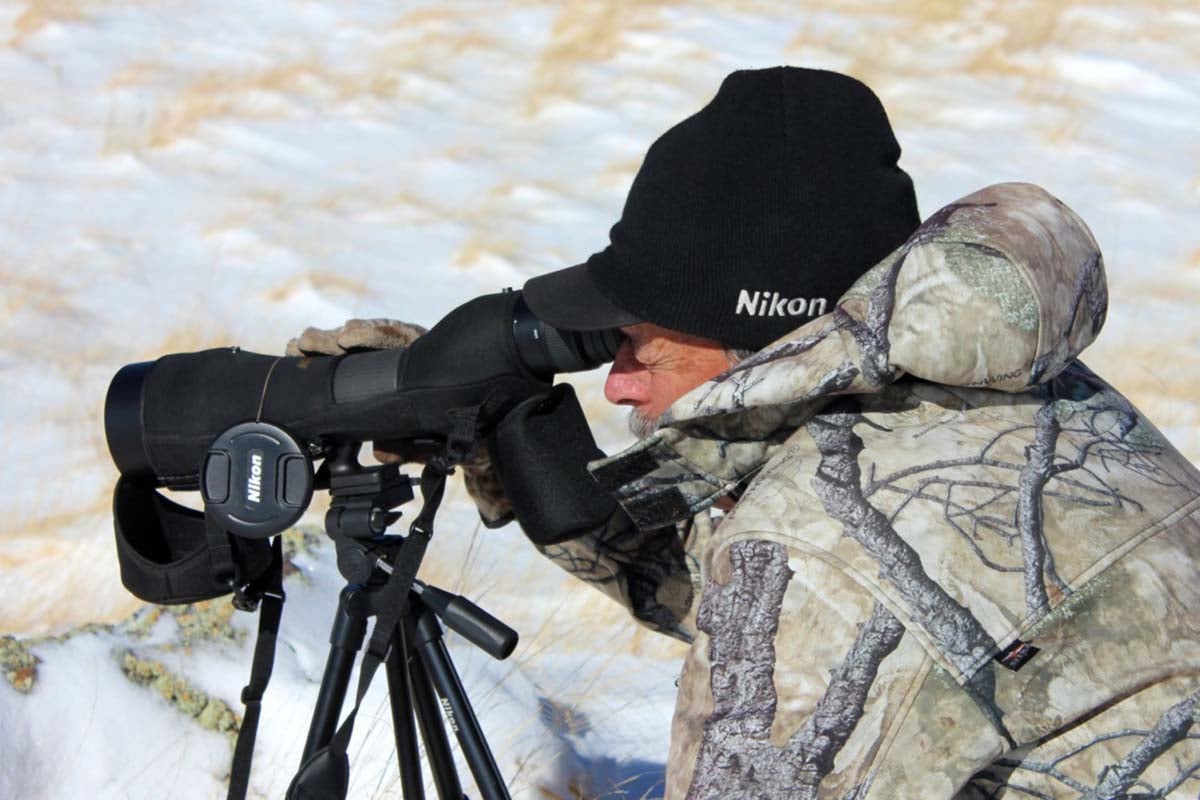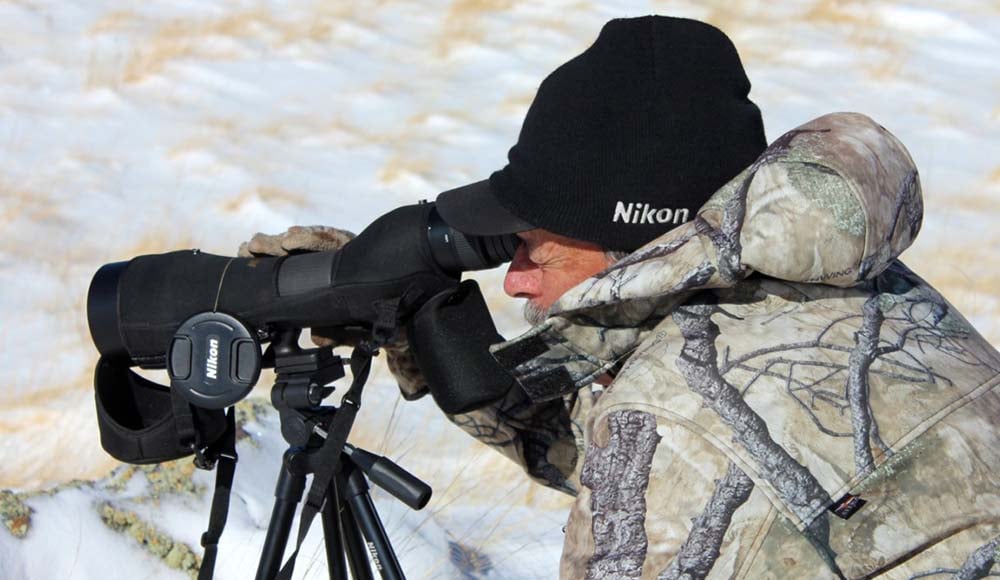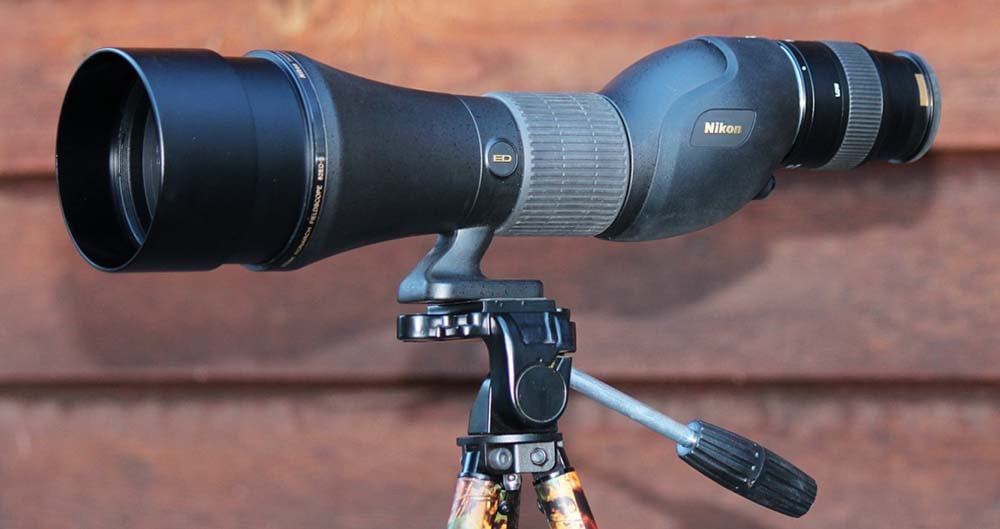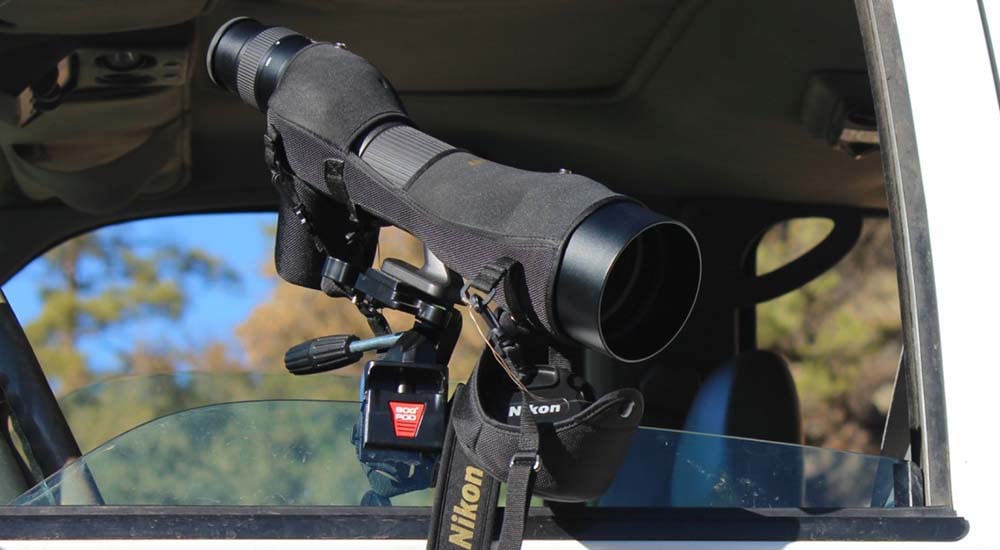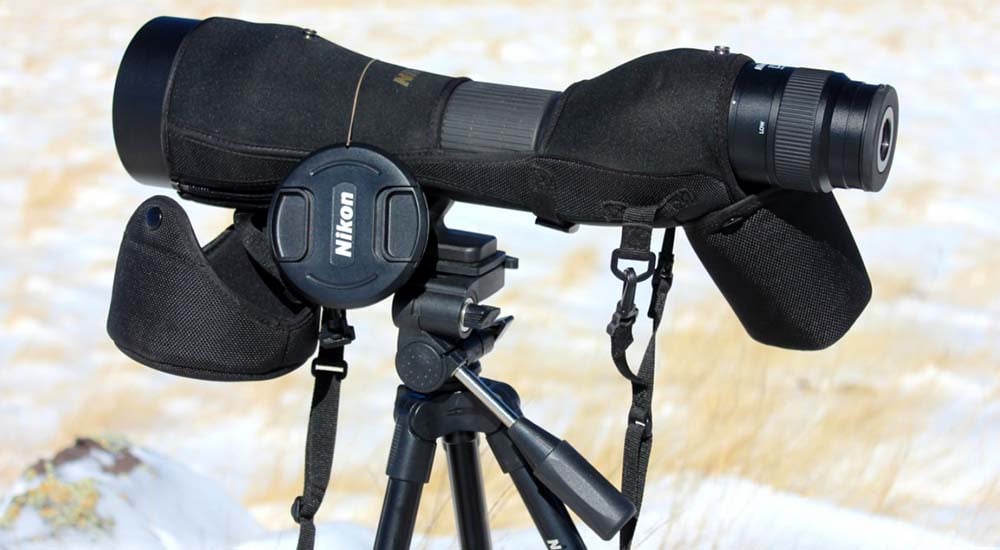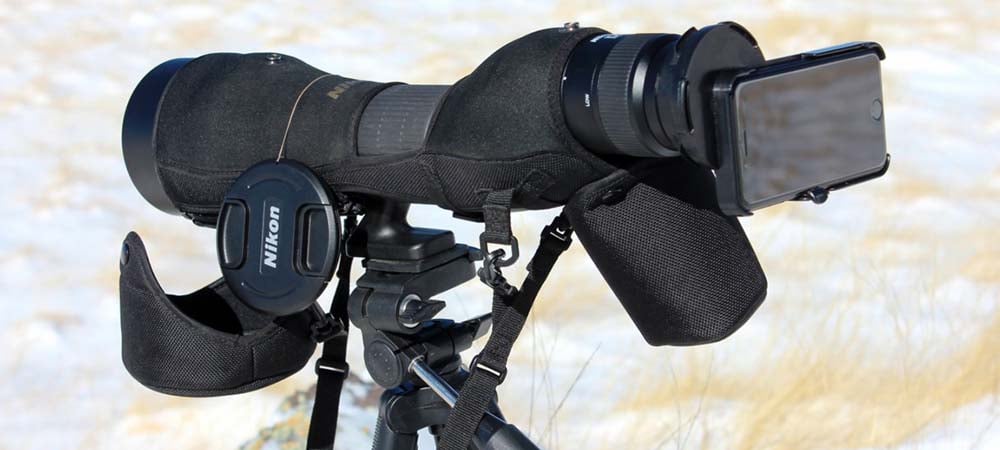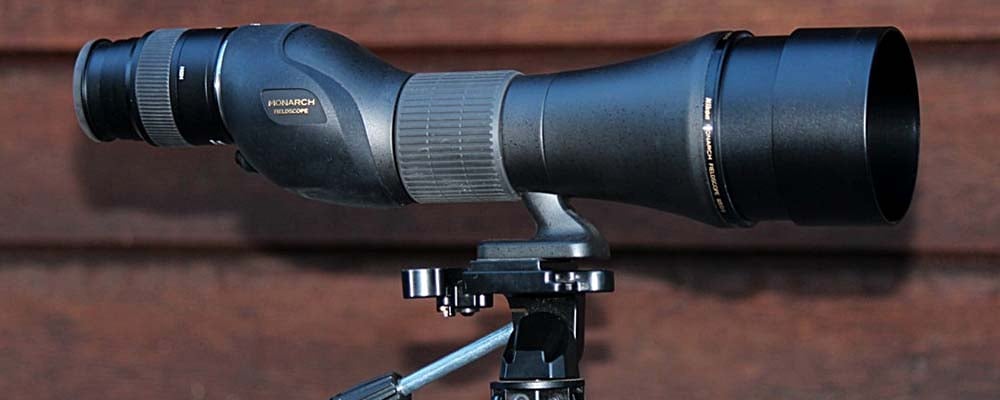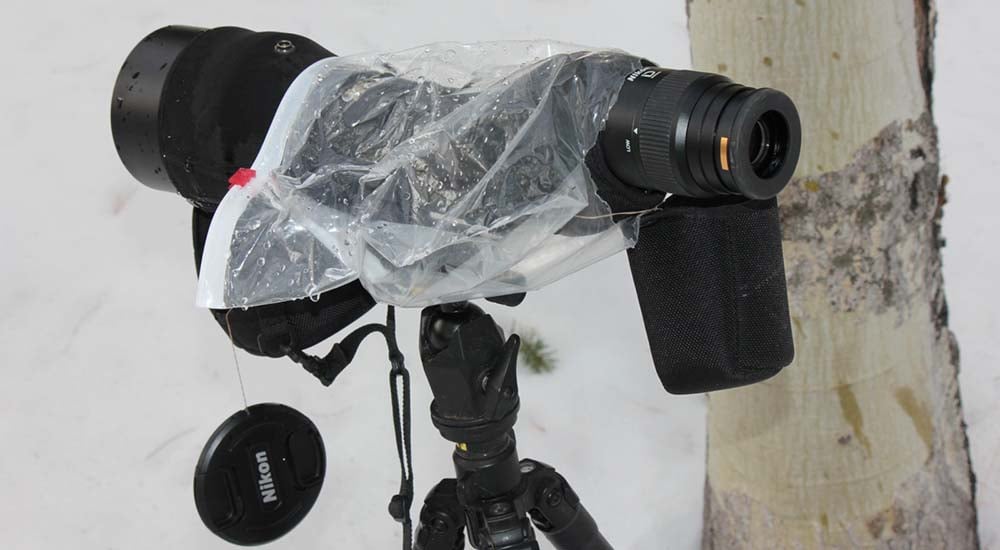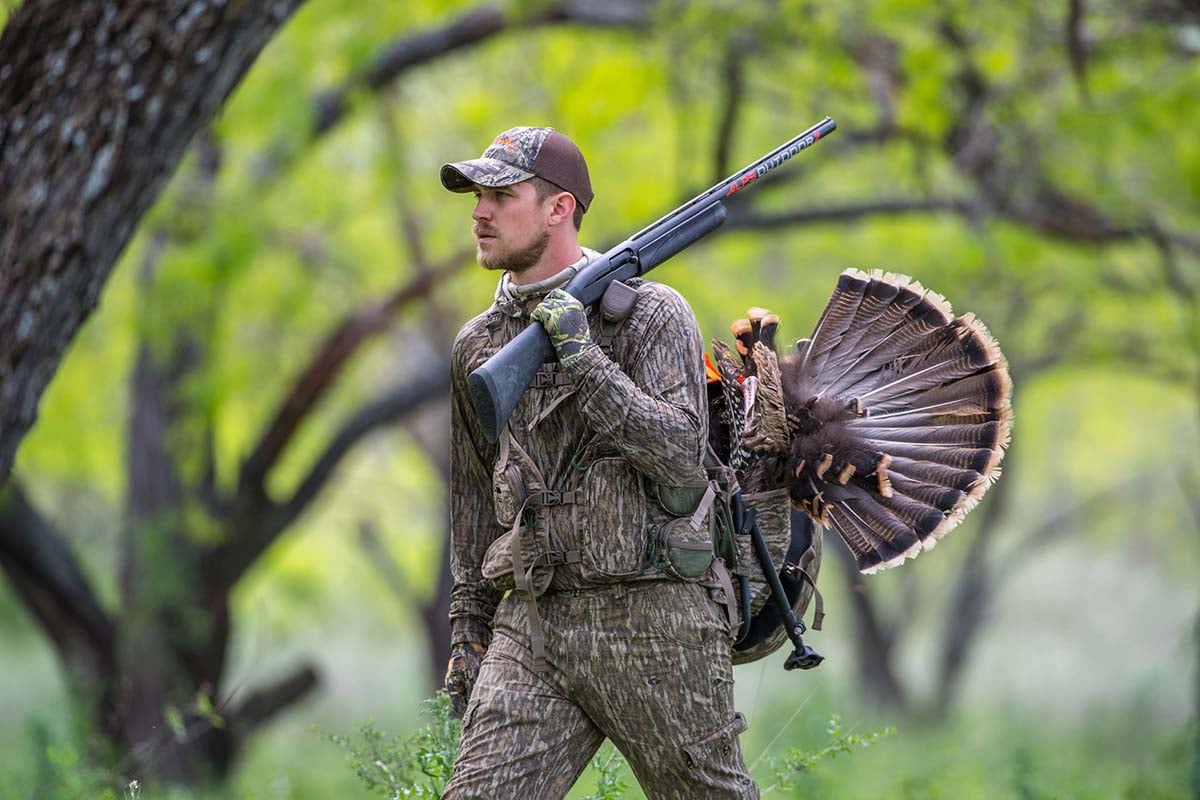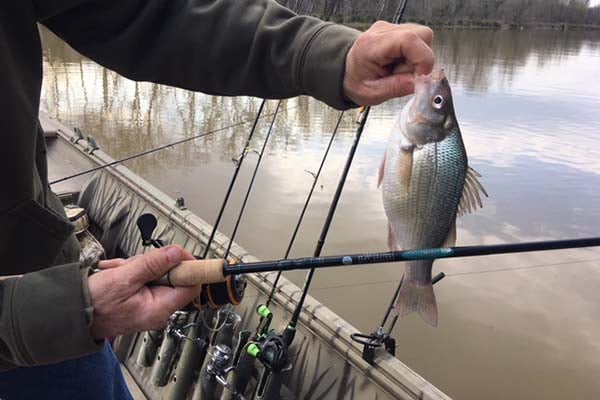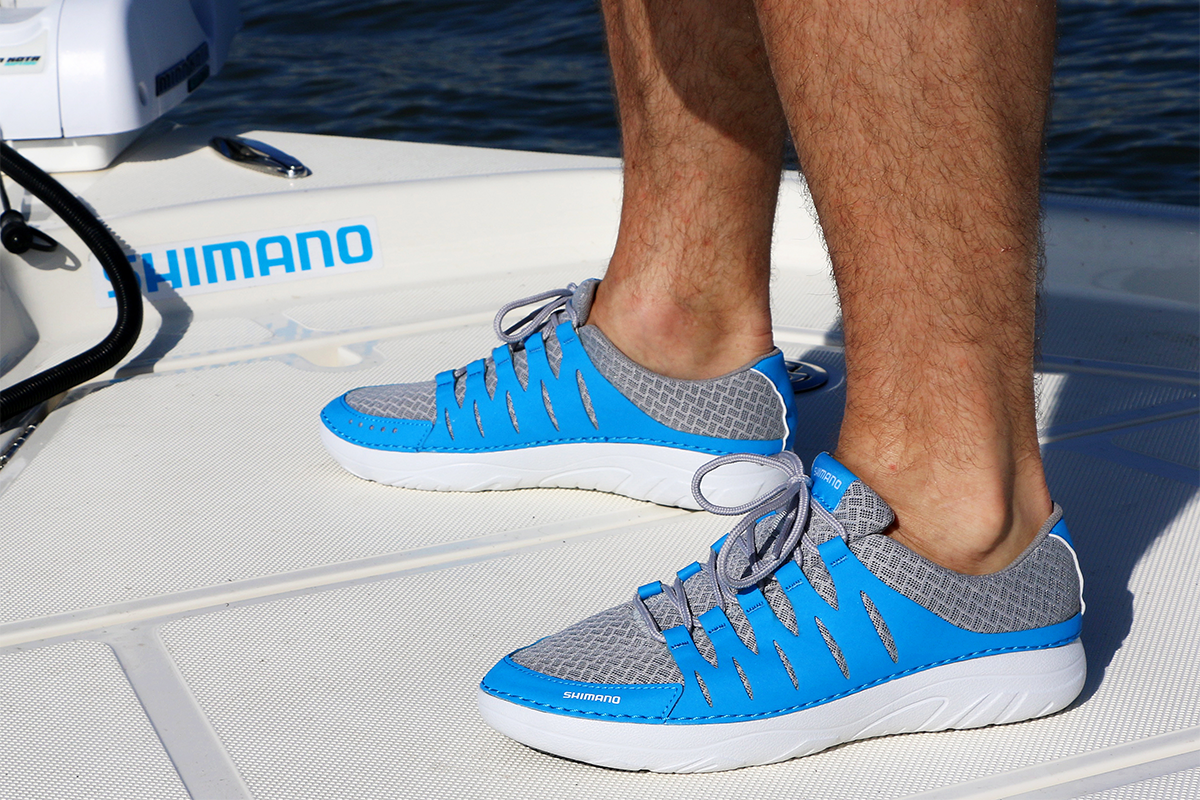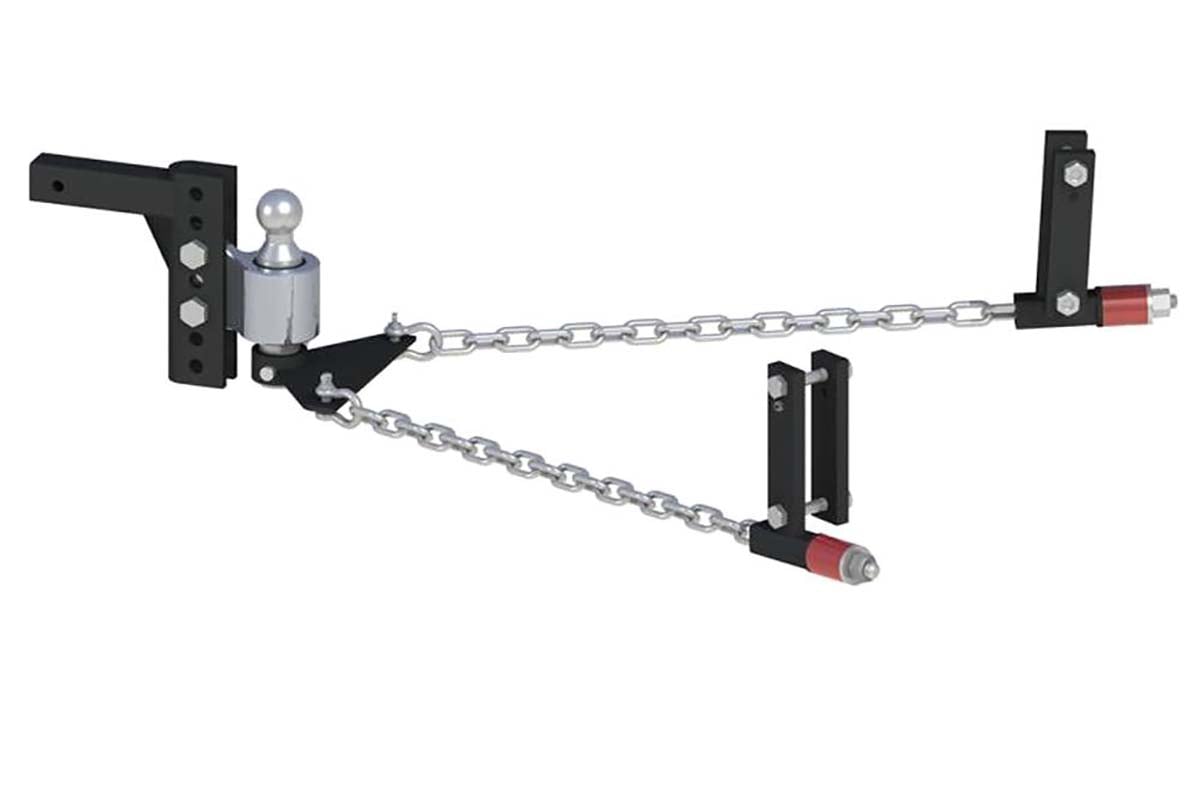By Tony Martins
It has been my good fortune to test Nikon’s Monarch ED Fieldscope during almost two dozen hunting and scouting outings over the past six months. These have included identifying duck species on the water a half mile away and scouting pronghorn from the comfort of my truck cab, picking apart dense cover in search of bull elk in Arizona’s White Mountains behind a tripod, and evaluating mid-Asian ibex more than a mile distant, from snow covered observation points high in the Tien Shan Mountains of eastern Kyrgyzstan. Field testing has covered extremes of altitude (5,000 to 14,000 feet), temperature (well below zero to 90+ degrees Fahrenheit), weather (from single-digit humidity to rain, snow and fog, high winds included) and exposure to solid contaminants like dirt, pollen dust, and glacial “rock flour”). The Monarch ED Fieldscope has passed each test with flying colors, and continues to deliver crisp, clear imagery. This is outstanding performance in a mid-range scope.
While most will recognize the Monarch brand for Nikon’s best-selling binoculars, rifle scopes and rangefinders also carry the name. It’s important to note that this is a mid-priced line, offering an excellent combination of dependable, high-performance optics at prices that are significantly lower than high-end units. With Nikon’s entry-level Prostaff 5 and top-of-the-line EDG Fieldscope models, the full-featured Monarch ED fills the mid-range space, and does so nicely! Following is a list of the main features:
- Two ocular designs constructed from aluminum alloy – straight-body (82ED-S & 60ED-S) and angled (82ED-A & 60ED-A)
- Two objective sizes – 82mm (with 20-60x zoom eyepiece) and 60mm (with 16-48x zoom eyepiece)
- Advanced Apochromat Optical System with Extra-low Dispersion (ED) glass
- Field Flattener Lens System
- Multilayer coating applied to all lens and prism surfaces
- Optimized Focusing System
- Large diameter knurled (ribbed) focusing ring
- Built-in sliding hood/shade for objective lens
- Nitrogen-filled body and waterproof eyepiece(s)
- Type 1 Bayonet Mount for eyepiece attachment
- Two optional eyepieces available for both objective sizes – MEP 38W (38x w/82 series and 30x w/60 series) and MEP 30-60W (30-60x w/ 82 series and 24-48x w/ 60 series)
- Padded protective case with carrying strap

NIKON MONARCH 20-60x82mm ED Straight Body
$1,296.95
Price accurate at time of writing
Specs:
- Advanced Apochromat Optical System with ED (Extra-low dispersion) glass
- Field Flattener Lens System
- Multilayer Coated Lenses and Prisms
- Optimised Focusing System
- Aluminum alloy body
- Built-in Sliding Sunshade
- Total Reflection Prism
- Waterproof; Nitrogen-filled and O-ring sealed
I have been using the straight-body 82mm Monarch ED Fieldscope (82ED-S) with the standard 20-60x zoom eyepiece, so my comments are for this particular model, unless otherwise noted. Let’s review how the listed features have performed for me over the past six months.
Occular Design – Angled-body scopes are more popular and arguably more comfortable during extended use. Nevertheless, I prefer straight-body models for a couple of reasons. First, I often use fieldscopes attached to a window-mount, from several different vehicles, both high- and low-profile. Straight-body models are typically easier to setup and use from a vehicle, particularly when digiscoping. I also find it quicker and easier to pinpoint a distant location with my naked eye immediately after observation through a straight scope. Although long (16-1/2 inches) and heavy (4-1/2 lbs.) with eyepiece and covers attached, the straight-body Monarch is well balanced and mounts quickly and easily. It also slides in and out of tubular backpack compartments more easily than angled models. And, while 82ED-Angled uses Nikon’s excellent original prism, 82ED-Straight uses a new total reflection Porro prism for bright, clear viewing.
Weight is an issue, particularly when backpacking and mountain hunting. Weight-saving plastic scope bodies are a significant trade-off in terms of durability when compared to aluminum alloy bodies with thick rubber armor coating. It’s easy to slip and fall while hiking/climbing in rugged terrain, and smacking a scope on rocks can render it useless. Some questioned my sanity in packing the full-size 82mm ED-S on our ibex hunt in Kyrgyztsan, but it survived a number of rocky insults, as well as a nasty horse wreck in the rocks, and continues to perform as new. Nikon obviously expected this, as Monarch ED’s are covered by their No-Fault Lifetime Repair/Replacement Warranty.
Objective Lens & Eyepiece – Despite the additional weight of about one pound, I chose the larger 82mm objective lens for its light-gathering superiority over smaller objective lens models. Used regularly during low-light conditions before sunrise and after sunset, this is an obvious choice for hunting and scouting applications. Magnification is also an important consideration when evaluating characteristics like animal age and horn length or antler size – particularly when viewing from distances that may require hours of physical exertion to cover! The 20-60x zoom Monarch Eyepiece (MEP) supplied with 82ED models is an excellent choice. With a field-of-view of 111 feet at 20x, target objects can be acquired quickly. Zooming to higher magnification for more detailed viewing is smooth, and eye contact with the target is easily maintained. Both image sharpness and light-throughput suffer at higher magnifications in all zoom eyepieces, and this drop-off is apparent around 45x with the Nikon MEP 20-60x. This is readily confirmed by comparison of digiscoped images recorded at increasing magnification levels. Eye relief is both ample (16.1mm) and adjustable – simply twist the eyecup clockwise for the longer of two relief positions.
The Type 1 Bayonet Mount functions as advertised, facilitating quick and secure eyepiece attachment/detachment. The loose-fitting, cheap plastic eyepiece cover is a minor point of contention, however. It came off in the padded Cordura cup that snaps on the odd looking but functional view-through case to protect the ocular lens, and was temporarily lost the first time I used the scope. My simple, low-tech solution to this problem was attaching the cover to the case with a heavy nylon thread (visible in some of the images). The hard plastic objective lens cover was also tethered with thread to prevent loss in the field, but it attaches securely with a double-pinch clasp that facilitates removal and re-installation as needed.
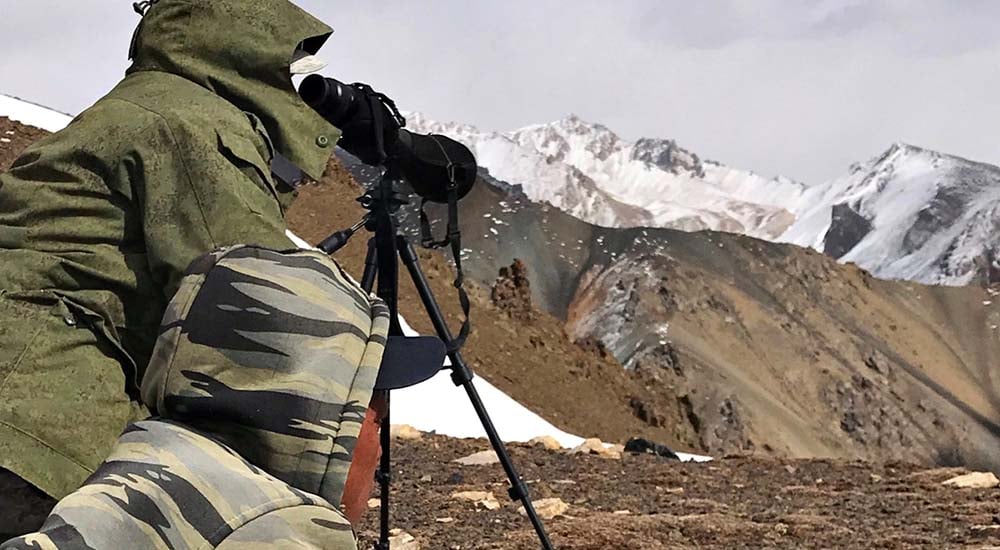
My hunting partner in Kyrgyzstan was packing a compact spotting scope of European design. Our head guide however, preferred the Monarch ED Fieldscope for evaluating age and horn length of the ibex we hunted. On reaching each observation position, guide “Bek” would call for the “Big Scope” to be setup. After zooming in on the animals, I would often attach a Phone Skope and iPhone to the eyepiece, for group viewing. The Multilayer Coating applied to lens and prism surfaces provided bright imaging of the naturally camouflaged animals, with good contrast. This undoubtedly helped Bek correctly assess the 105 centimeter horn length of the ibex that I ultimately shot – from 1600 yards away! And, the new Field Flattener Lens System provided consistent image sharpness across the entire field of view, even with Phone Skope attached. These two features helped me locate a bull elk well before sunrise during my hunt in Arizona last December. Though I couldn’t count points at this range the bull was unquestionably a giant, feeding in thick pinon-juniper cover several miles away. It took more than an hour to cover the distance to this animal in my truck. Unfortunately, this remarkable spotting event was in vane, as the animal was residing on recently privatized and posted land.
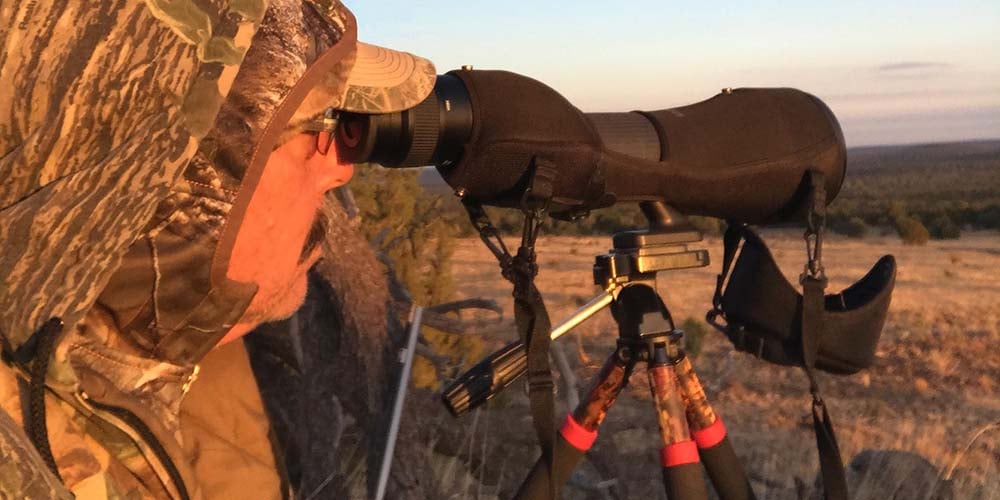
Although a bird hunter rather than a bird watcher, I am certain that “birders” on a budget will appreciate Nikon’s Advanced Apochromat Optical System and Extra-low Dispersion (ED) glass in the Monarch ED Fieldscopes. This system effectively minimizes chromatic aberration – the color “fringing” and focusing problems that result when different wavelengths of radiation (“color bands”) are refracted through lenses at different angles without correction. The result is vibrant, natural coloration of images passing through the scope with greater contrast and sharpness, even when light conditions are less than optimal. Most waterfowl hunting in mid-winter occurs under overcast skies, with prime shooting times at dawn and just before sunset. Despite poor light, I’ve been able to use the Monarch 82ED-S to correctly identify duck sub-species differentiated by slight variations in color, out to 1000 yards. Multilayer coating on the lenses and prisms enhances brightness, sharpness and contrast necessary to make these determinations. Point of clarification: Considering that I’ve now “digiscoped” more than 1000 photos of waterfowl and other feathered creatures using this fieldscope, I probably qualify as a birder… of sorts.

Nikon’s Optimized Focusing System is another interesting feature, where the focusing rate depends on the distance to the target. Also known as “variable speed focusing,” this requires some practice to understand and master, but appreciation grows with usage. As the focus ring is turned, the speed of image focusing is directly related to target distance. Focus rates can be grouped and described as follows: very fast/coarse adjustment for distant targets, somewhat slower/finer adjustment for mid-distance targets, and very slow/fine adjustment for targets that are close. The value of this system became apparent during scouting for javelina and Coues whitetails in scrub-oak country in central Arizona. Spotting these small animals in their natural habitat is a challenge. Furthermore, Coues deer are known as “Gray Ghosts of the Southwest” for their ability to vanish from sight right in the middle of the viewing field of your optic! Quickly pinpointing an animal’s location can be the difference in filling your tag… or not. This focusing mechanism in the Monarch ED Fieldscope proved itself up to the task. The Field Flattener Lens System also helped to minimize eye fatigue, as well as unnecessary movement of the optic to maintain sharp imaging during lengthy glassing sessions. And, as I learned in sub-zero temperatures in Kyrgyzstan, the large diameter knurled (ribbed) focusing ring positioned mid-body on the 82ED-S facilitates operation, even while wearing heavy gloves.
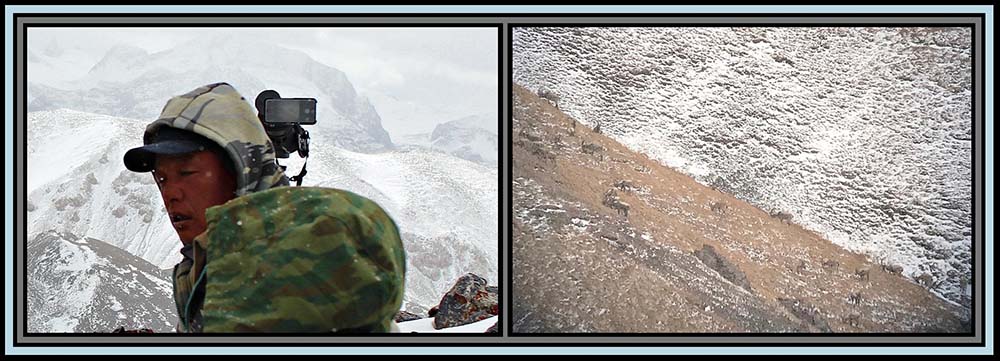
Speaking of Kyrgyzstan – Using the Monarch 82ED-S Fieldscope on a weeklong horseback and foot hunt for ibex in the rugged and dangerous Tien Shan Mountains would in itself qualify as an “extreme” field test. There was extreme altitude, up to 14,000 feet, and extreme weather, with temperatures falling well below zero, rain at lower elevations that quickly turned to snow, and high winds strong enough to topple optics mounted on lightweight tripods. The big scope suffered unavoidable impacts with ever-present rock – mostly minor, but one that was significant. Constant exposure to grit in the form of a fine powder called “rock flour,” produced by rocks being ground up by glacial movement, was another extreme and uncommon factor that could have compromised optical performance of the fieldscope, as I suspect it did with rangefinders on this hunt. Credit the nitrogen-filled body and waterproof eyepiece, as well as the substantial aluminum alloy housing and rubber armor coating for outstanding, unfailing performance. To date, there have been no malfunctions, no fogging and no evidence of condensation, despite exposure to extreme temperature changes in the high deserts of Arizona.
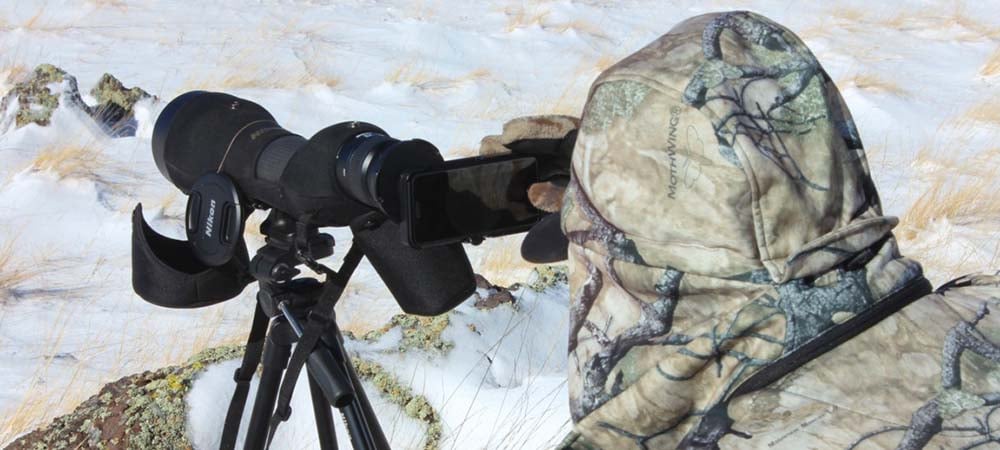
It should also be noted that the built-in sliding hood for the objective lens and padded protective case with carrying strap provide a measure of additional protection for the unit. The hood slides in and out easily – even with view-through case attached – to shade and block light that may be harmful to the sensitive optical system. It also protects the lens from insult, as I learned when one of my Labrador retrievers knocked the tripod holding the fieldscope over during a playtime break from glassing. The case, constructed of neoprene rubber and Cordura nylon fabric, protects as described – despite its unusual design. This was no doubt dictated by the mid-unit positioning of the large focusing ring. And, the padded carrying strap – secured by two built-in attachment brackets on the case – is a useful feature that adds comfort with a shoulder carry option when transporting the 4-1/2 pound unit.
A few words about digiscoping: Nikon has been a leader in the digiscoping field since the advent of the digital camera, and the company continues to offer a selection of adapters to attach their popular Coolpix and D-series SLR cameras to their fieldscopes. I remember vividly my first attempts at digiscoping 12 years ago – hand holding a compact 35mm camera with telephoto lens extended to match up with the eyepiece of my vintage Nikon Sky & Earth Spotting Scope, hoping to capture images of a nice pronghorn buck. Most of the images were dark and blurry, but once in awhile you’d get lucky! Interest in digiscoping has grown with improvement in the quality of cameras installed in smartphones. Recently, I have been using an iPhone 7 with Phone Skope adapter attached to the Monarch 82ED-S for the majority of my digiscoping. It’s both useful and fun returning to hunting camp with images to share with your mates: “Is this the buck you saw up in Horseshoe Canyon?” Digiscoping with modern smartphones through fieldscopes like the Monarch ED series units can produce good quality images suitable for printing, enlarging and even publication.

Likes & Dislikes
To find dissatisfaction with the Monarch 82ED-S Fieldscope requires some stretching – out to the fringe of nit-pickiness. Tops on my list would be the lens caps, particularly the cheap, loose fitting, flexible plastic, ocular lens cap. Frankly, this is just unacceptable in a $1600.00 optic. And although the larger, rigid plastic objective lens cap is designed to lock in place, there is no mechanism for securing either cap while the optic is being used. Similarly, the snap-on/snap-off lens cover pieces on the funky looking but functional view-through protective case become a nuisance when the optic is in use, particularly in the wind. These too can be easily lost when completely detached from the case. Imagine yourself glassing from the top of a snow-covered ridge at 14,000 feet in the Tien Shan Mountains, when a sudden wind gust blows your caps/covers off the ridge and into the canyon 1500 feet below… You get my point.
Probably the most annoying point of contention with this “waterproof” scope is that it should not be used in the rain. Whaaat??? That’s right… says so on page 24 of the owners manual in plain English (pages 1-21 are printed in Japanese). Quoting: “Keep the product away from rain… Do not operate the focus ring if the product is wet from rain.” Is this a deal-breaker? No. But if you hunt, you are bound to encounter inclement wet weather. The simple solution is to slit the bottom of a gallon-size zip-lock bag, unzip and slip it over the scope, centering over the focus ring. Focusing is possible with the plastic in place, while sensitive areas are protected from malevolent precipitation. And yes, the 82mm Monarch ED is heavy, but so are other fieldscopes in the same class. Granted, this is probably not the best option for backpackers and mountain hunters concerned with saving every ounce possible. The good news is that it’s built like a tank – so if you can handle the load, it will last a lifetime.
Nikon boasts that their Monarch Fieldscopes are offered “… at a price point that is virtually unrivaled for this level of optical quality” and frankly, there’s a great deal of truth in this claim. You will have to spend at least twice as much for a small gain in optical performance, so these scopes represent real value. Monarch ED spotters are feature-rich and well suited for hunting and target shooting/scoring applications, as well as bird watching and wildlife viewing, and especially digiscoping. With proper care and a little maintenance, this fieldscope will probably become an heirloom, outliving your ability to use it! And if it doesn’t, your investment is protected with Nikon’s No-Fault Lifetime Repair/Replacement Warranty, which is among the best in the business.
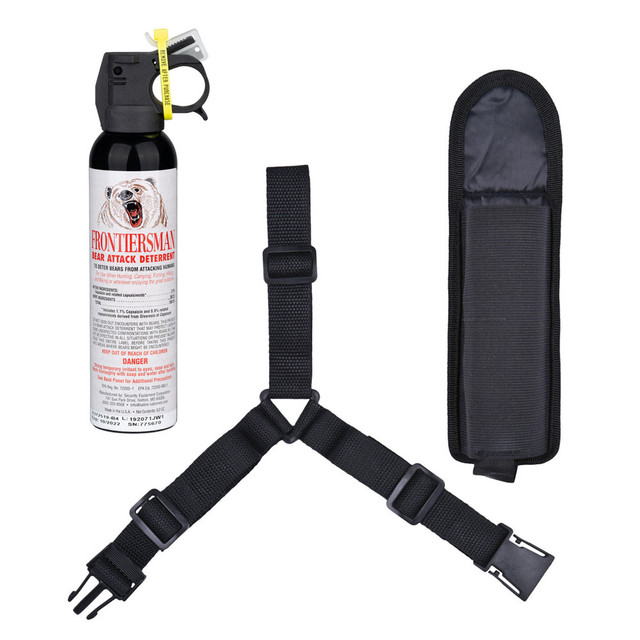
SABRE Frontiersman Bear Attack Deterrent 9.2 Oz With Chest Holster 15 Lbs
$57.13
Price accurate at time of writing
Specs:
- Strongest formula allowed by law
- Made with 2.0% Major Capsaicinoids
- 35-foot (10-meter) spray range
- Strong elastic keeps bear spray secure while out on the trails
- Holsters eliminate the unnecessary Velcro straps allowing for quick & silent access
